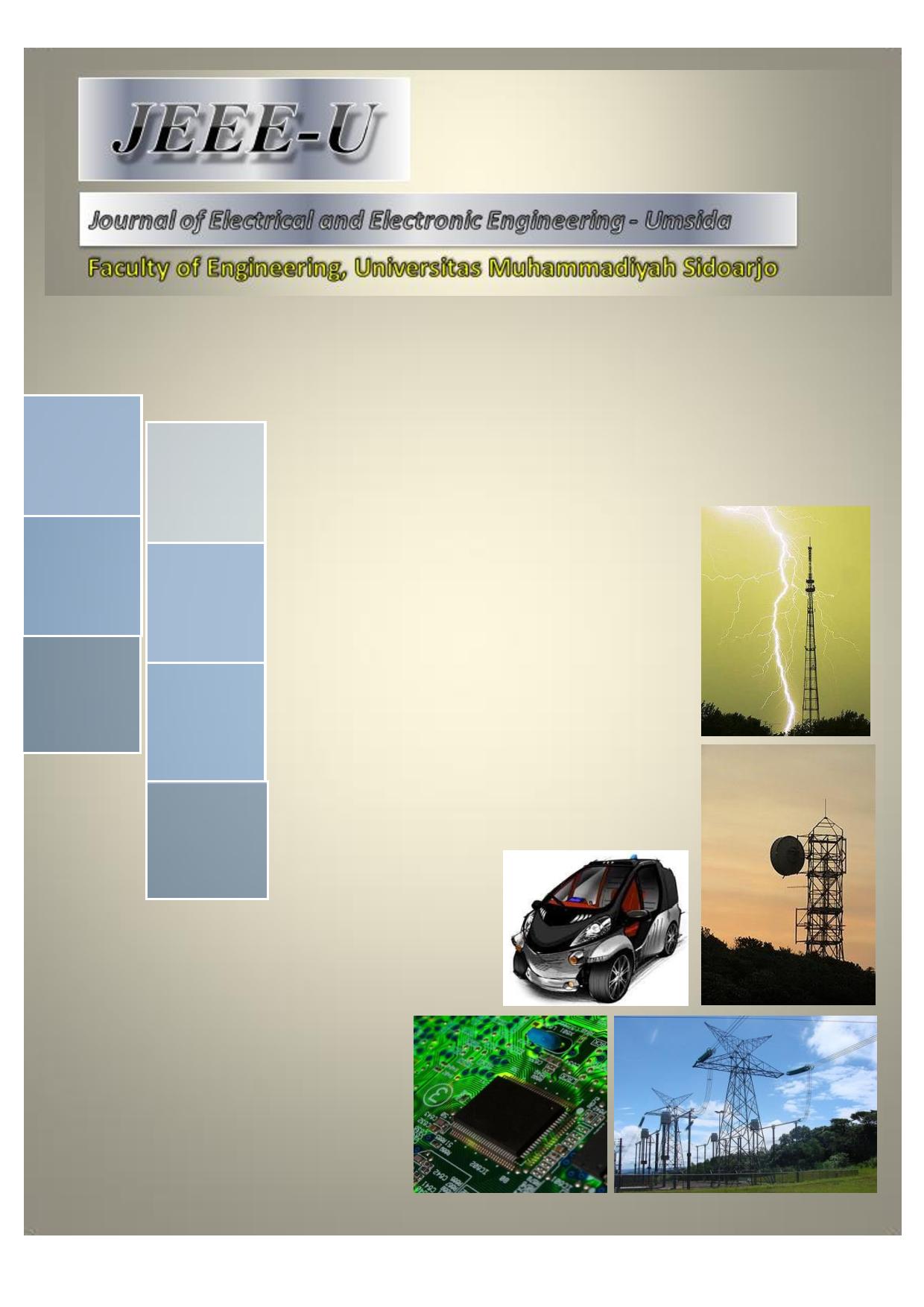Performance Analysis of Three Phase Induction Motor at PT. Intracawood Manufacturing
DOI:
https://doi.org/10.21070/jeeeu.v9i1.1692Keywords:
Induction Motor, Performance, Power, Torque, EfficiencyAbstract
To support the production process in an industry, there are many electric motor equipment in the form of induction motors. Induction motors are the most widely used motors in various fields, ranging from household environments to large-scale industries. Induction motors that are used continuously do not guarantee that they will always work normally, meaning that the motor can experience damage. These damages can affect the performance of the reduced induction motor. To find out the performance of the motor at PT. Intracawood Manufacturing, an analysis was carried out on the Blower Sander, Rotary, Conveyor Dry, and Conveyor Finishing motors, respectively on taking motor data based on the name plate and the motor in the current condition that was running or after rewinding. Motor performance analysis was conducted by calculating current, input power, output power, load torque, induction torque, and efficiency. From the calculation results, the Blower Sander motor by taking motor on the name plate with a current of 103 A, obtained an input power of 58.979 kW, an output power of 51.214 kW, an induction torque of 335.12 N.m, a load torque of 330.62 and efficiency of 86,83%. Meanwhile, the current motor condition with a current of 81.2 A, obtained input power of 43.945 kW, output power of 38.605 kW, induction torque of 254.7 N.m load torque of 250.23 N.m, and efficiency of 87.84%. Can be concluded, the performance of a three-phase induction motor at PT. Intracawood Manufacturing was a better is after rewinding.
References
L. Siregar, R. Silaen, and J. L. Hutabarat, “Pengaruh Perubahan Beban Terhadap Putaran dan Daya Masuk Motor Induksi Tiga Fasa (Aplikasi Pada Laboratorium Konversi Energi Listrik FT-UHN),” *ELPOTECS Jurnal*, vol. 4, no. 1, 2021.
L. Sartika, A. M. Prasetia, and I. E. N. Nicholas, “Analisa Pengaruh Perubahan Beban Terhadap Kinerja Motor Induksi 3 Fasa Scraper Conveyor Di PT. Citra Sawit Lestari,” *JETT Jurnal Elektro Telekomunikasi Terapan*, vol. 10, no. 1, pp. 7–16, Jul. 2023.
N. Y. Yana, “Evaluasi Kinerja Motor Induksi Tiga Fasa Setelah Rewinding Di PT. Pertamina (Persero) RU III Plaju,” Skripsi, Universitas Sriwijaya, Palembang, 2020.
F. Fadhilah, “Analisa Perencanaan Lilitan (Rewinding) Motor Induksi, Serta Pengaruh Peningkatan Resistansi Kumparan Stator Terhadap Kinerja Motor Induksi 3-Fasa 220/380V,” Skripsi, Universitas Muhammadiyah Sumatera Utara, Medan, 2021.
M. A. K. Negara, “Evaluasi Kinerja Motor Induksi 3 Fasa Setelah Perbaikan Rewinding,” Skripsi, Universitas Sriwijaya, Palembang, 2020.
S. Fadila, E. Zondra, and Arlenny, “Analisis Kinerja Motor Induksi Tiga Phasa 2,2 kW Di PT. Maxpower Indonesia,” *SainETIn (Jurnal Sain, Energi, Teknologi & Industri)*, vol. 7, no. 2, pp. 16–24, Jun. 2023.
A. K. Pratama, E. Zondra, and H. Yuvendius, “Analisa Efisiensi Motor Induksi Tiga Phasa Akibat Perubahan Tegangan,” *SainETIn (Jurnal Sain, Energi, Teknologi & Industri)*, vol. 5, no. 1, pp. 35–43, Dec. 2020.
M. S. I. Abdillah and E. A. Zuliari, “Analisa Kinerja Motor Induksi 3 Fasa Pada Pompa Sentrifugal Di Favehotel Rungkut Surabaya,” in *Seminar Nasional Sains dan Teknologi Terapan VI*, ITATS, pp. 605–610, 2018.
S. J. Chapman, *Electric Machinery Fundamentals*, 5th ed. 2020.
B. P. K. Putra, S. Setiawidayat, and F. Hunaini, “Optimisasi Perbaikan Harmonisa Pada Lampu LED Menggunakan Metode MQPSO,” *JEEE-U*, vol. 8, no. 2, pp. 82–93, 2024.
M. R. Pratama, J. Jamaaluddin, and I. Sulistiyowati, “Rancang Bangun Sistem Pengisian Baterai Sepeda Listrik Menggunakan Panel Surya,” *JEEE-U*, vol. 8, no. 2, pp. 71–81, 2024.
R. Y. Prasetiya et al., “Analisa Kinerja Sistem Pembangkit Listrik Tenaga Surya Atap 1 MW di Daerah Karawang,” *JEEE-U*, vol. 8, no. 2, pp. 60–70, 2024.
I. Winarno, A. F. P. Agung, and B. Y. Dewantara, “Analysis of The Impact of Temperature and Discharge Current on The Efficiency of LiFePO4 Batteries in Solar Charging Stations,” *JEEE-U*, vol. 8, no. 2, pp. 94–110, 2024.
R. Firmansyah et al., “DC Motor Speed Control using Particle Swarm Optimization based on Labview,” *JEEE-U*, vol. 8, no. 2, pp. 111–121, 2024.






